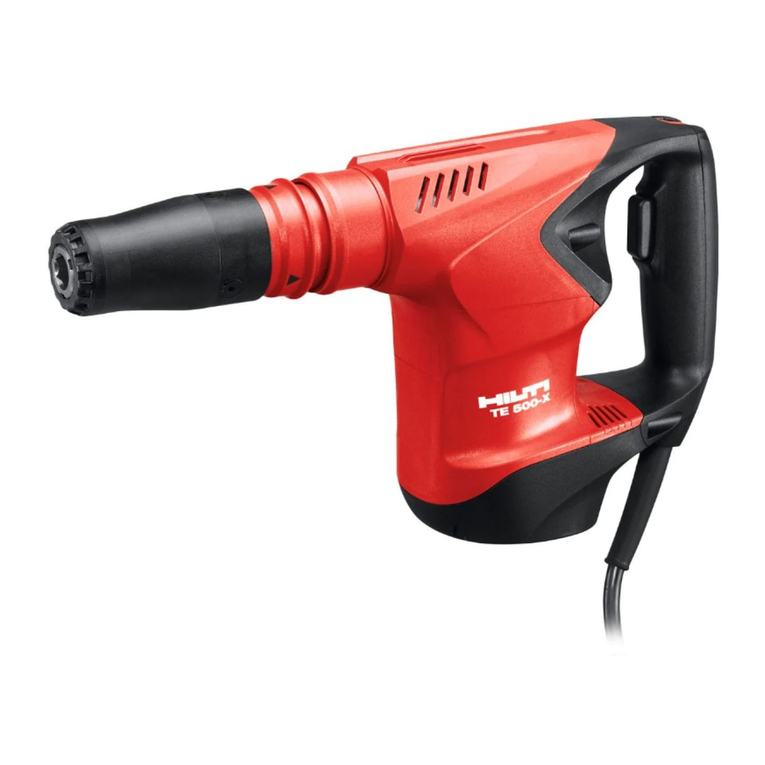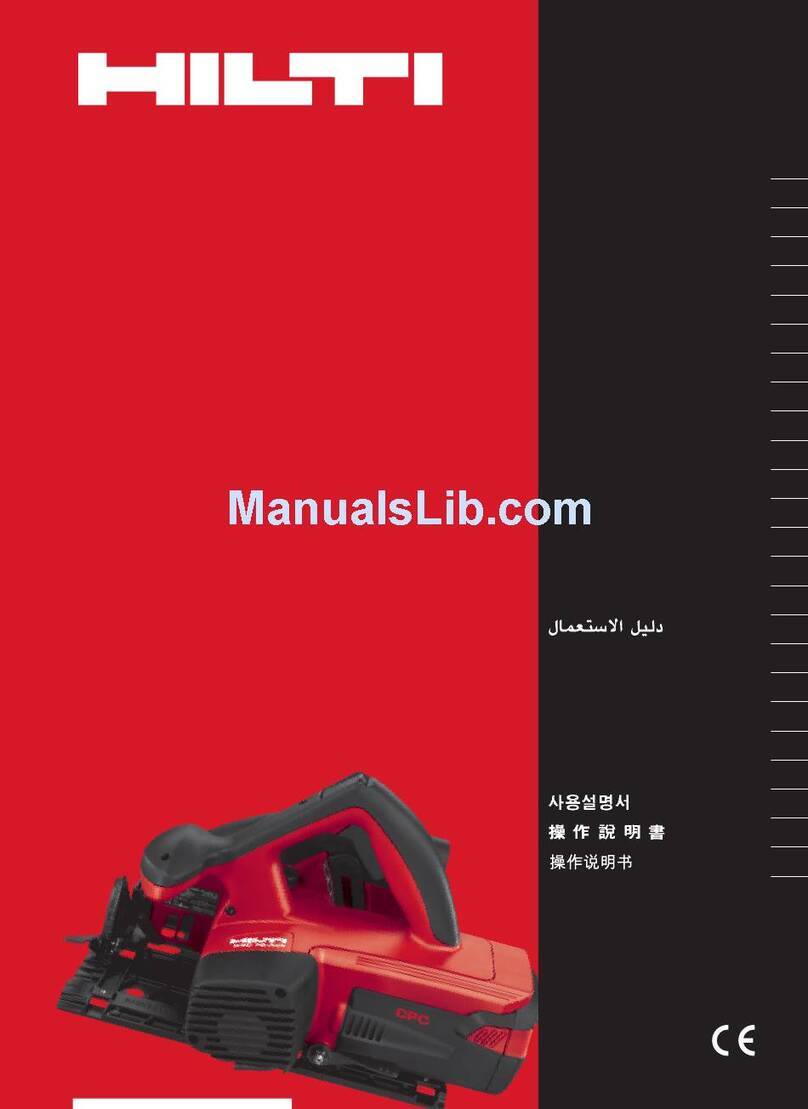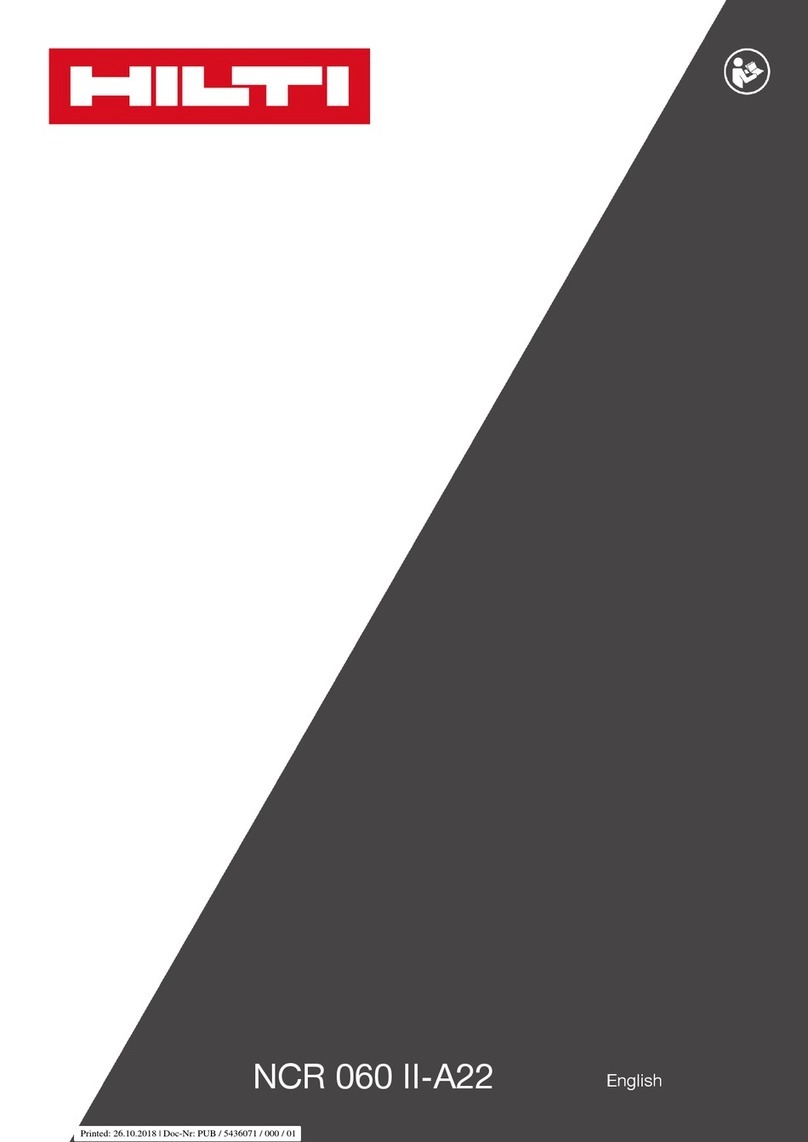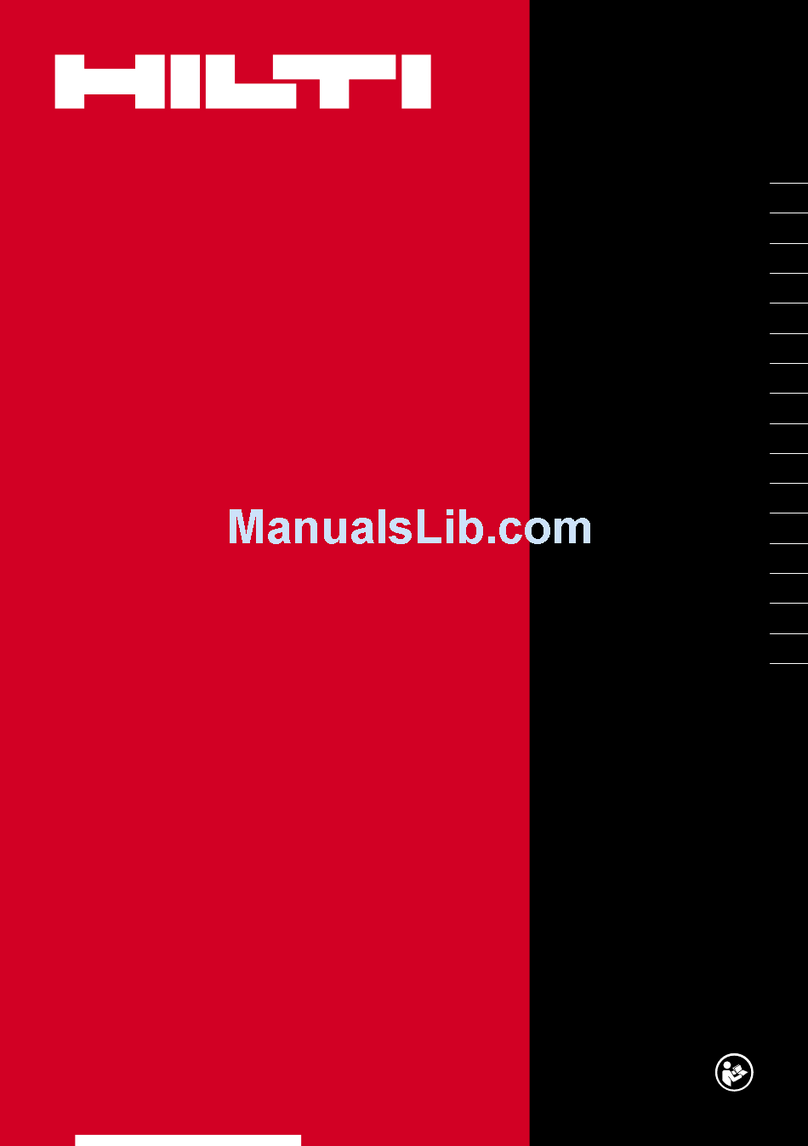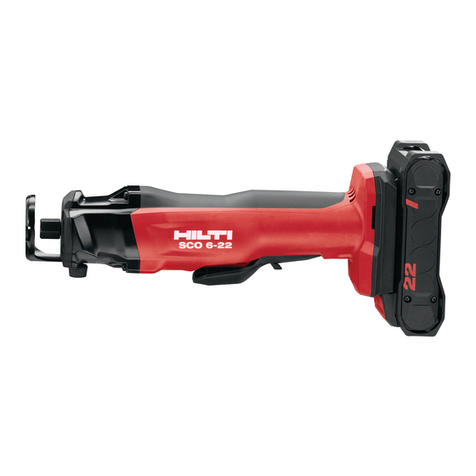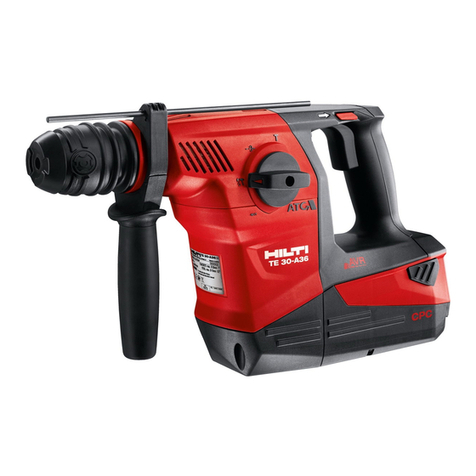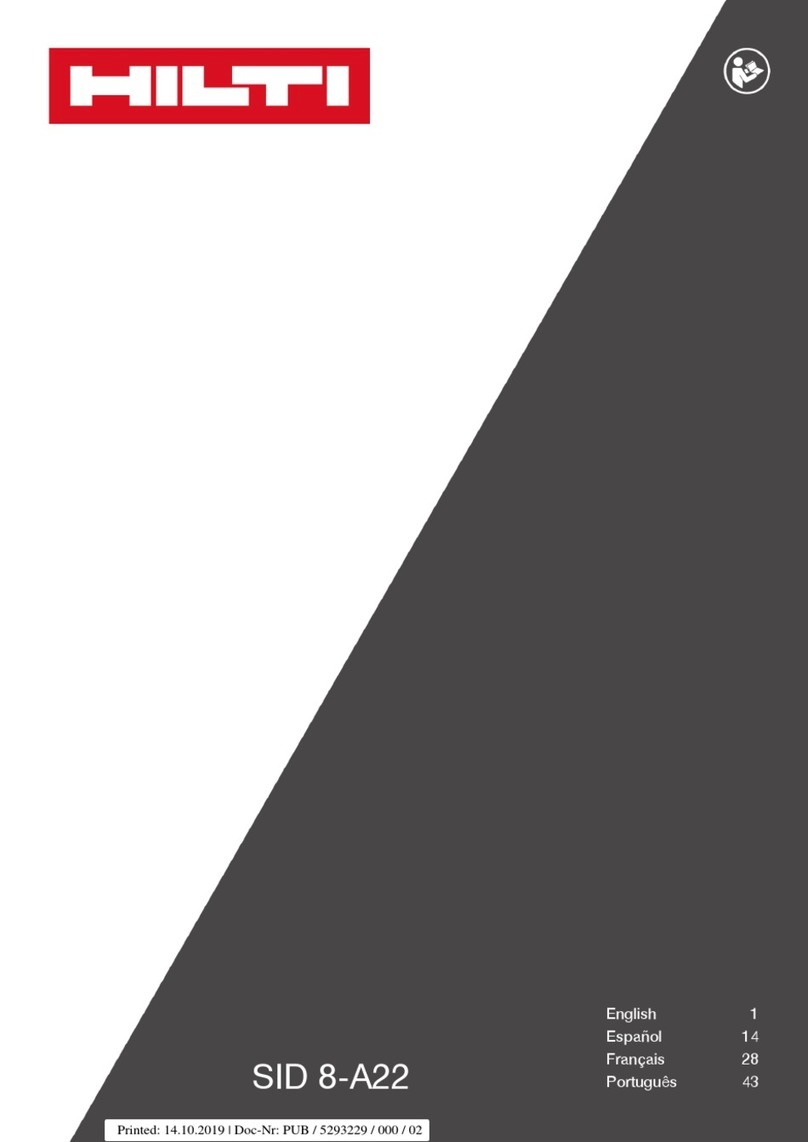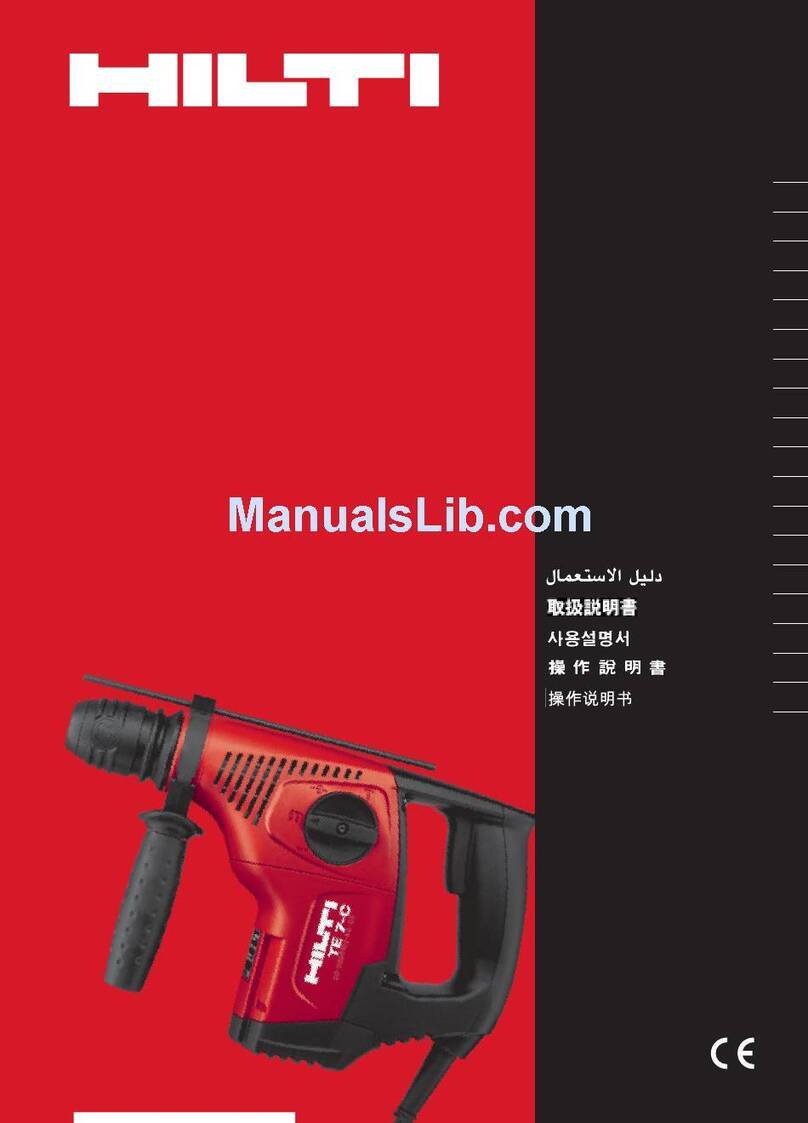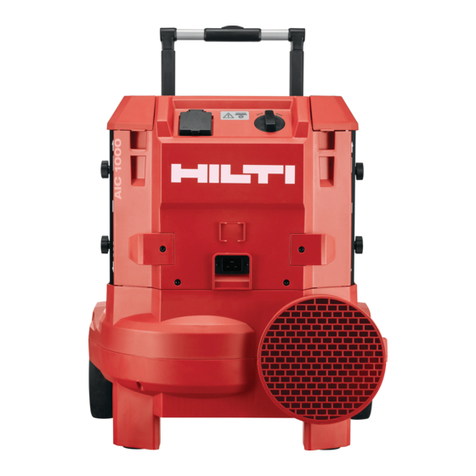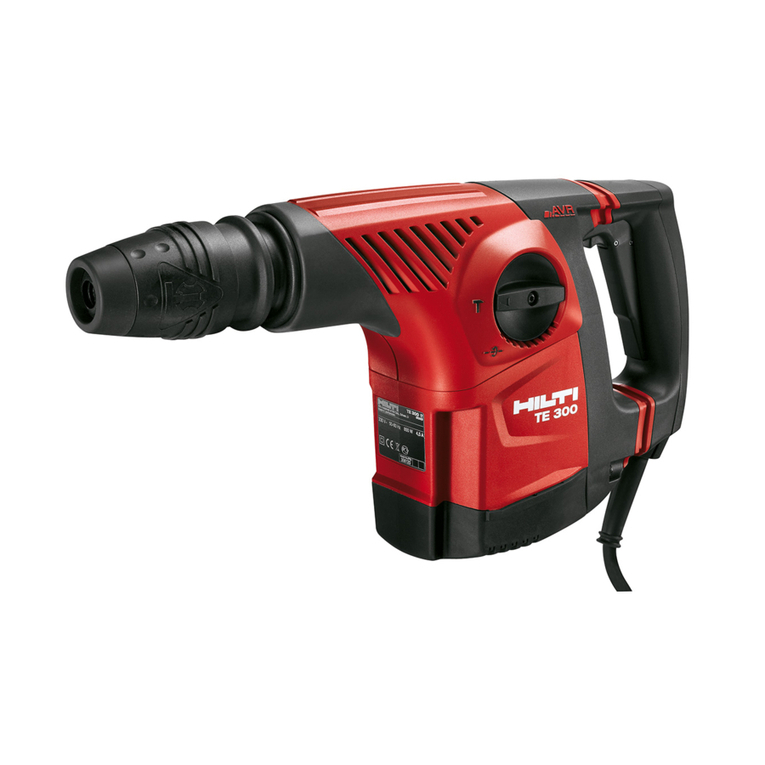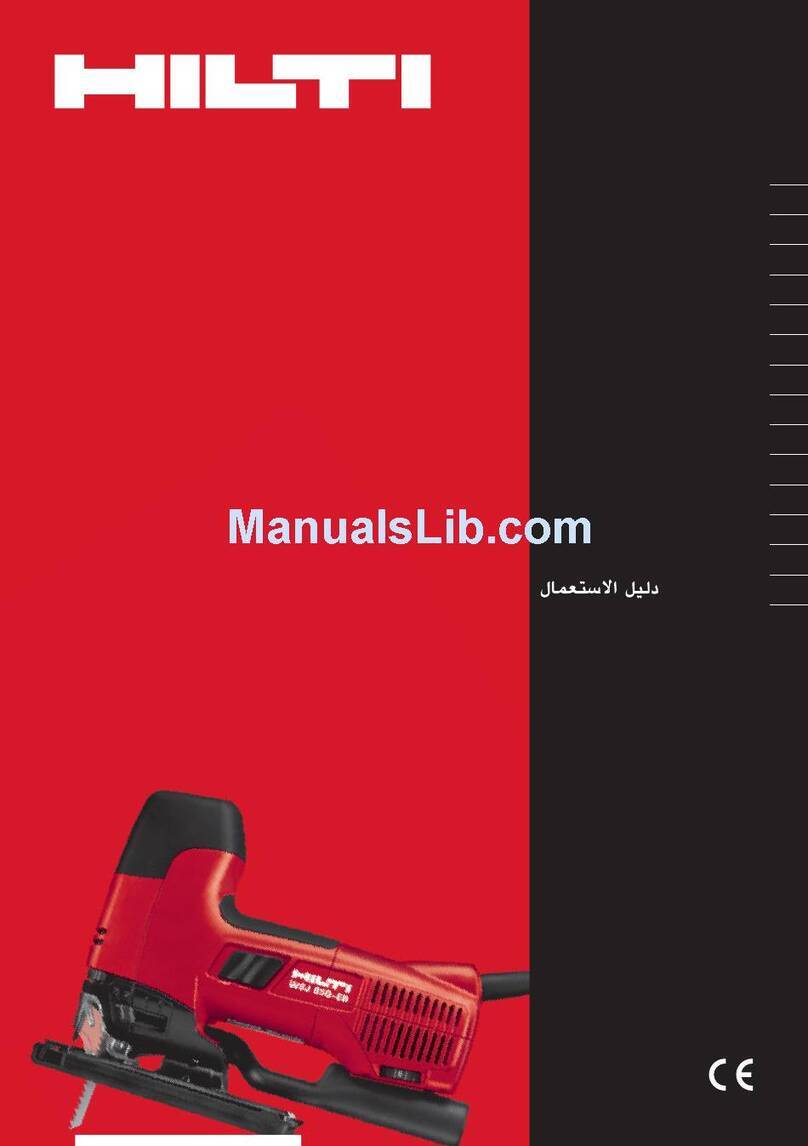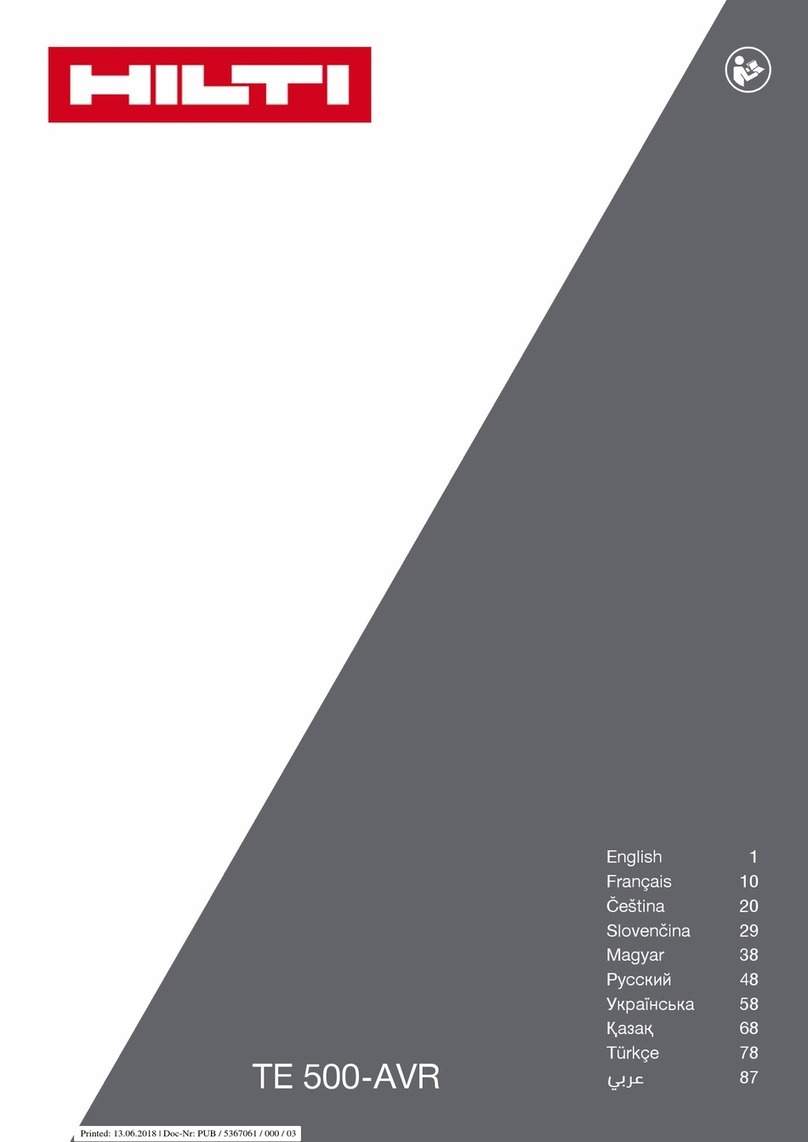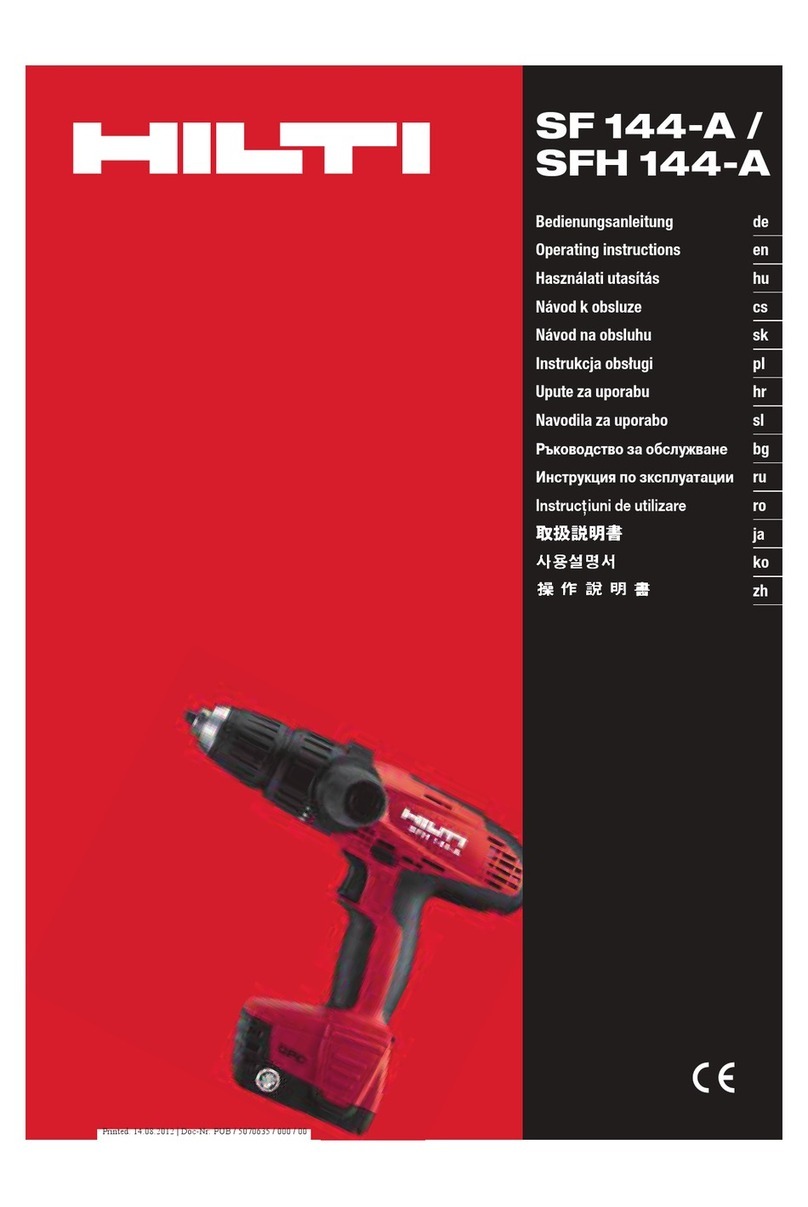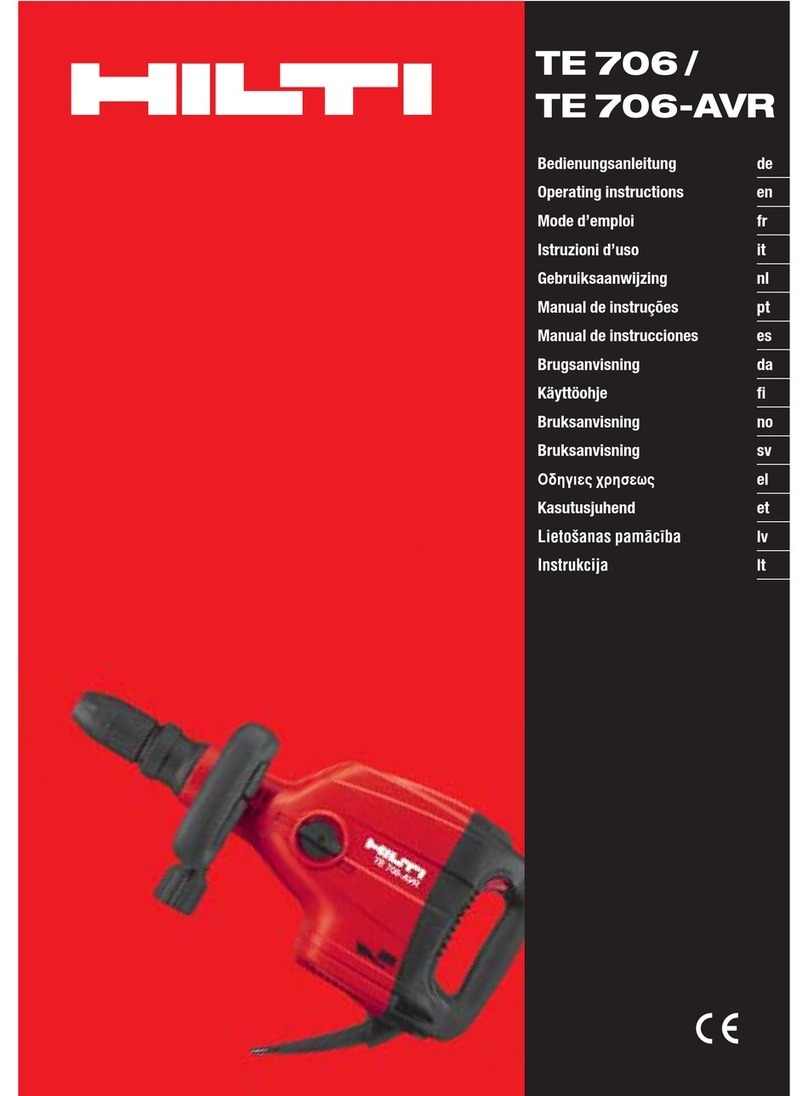
2 Description
2.1 Use of the product as directed
The DD 160 is an electrically-powered, rig-type diamond core drilling machine for drilling through-holes and blind
holes in (reinforced) mineral materials using diamond core bits and the wet drilling technique (hand-held use is not
permissible).
The machine must be adequately secured to the working surface with an anchor or vacuum base plate before use.
To avoid injury, use only genuine Hilti core bits and DD 160 accessories.
Observe the safety rules and operating instructions for the accessories used.
Observe the information printed in the operating instructions concerning operation, care and maintenance.
Nationally applicable industrial safety regulations must be observed.
The machine, accessories and cutting tools may present hazards when handled incorrectly by untrained personnel or
when used not as directed.
Use of the water collection system in conjunction with a wet-type industrial vacuum cleaner is a mandatory requirement
for working overhead.
An additional means of securing the drill stand must be employed when the machine is secured with the vacuum base
plate (accessory) for horizontal drilling.
Do not strike the base plate with a hammer or other heavy object when making adjustments to it.
Tampering with or modification of the machine, drill stand and accessoriesisstrictlyprohibited.
WARNING
The machine may be operated only when connected to an adequately-rated electric supply equipped with an
earth (ground) conductor.
WARNING
Drilling into materials hazardous to the health (e.g. asbestos) is not permissible.
DANGER
Use only the genuine Hilti accessories or ancillary equipment listed in the operating instructions. Use of
accessories or ancillary equipment not listed in the operating instructions may present a risk of personal injury.
2.2 Use of the machine with various items of equipment
Equipment Core bit diameters Drilling direction
Without water collection system and wet-type
industrial vacuum cleaner
25…202 mm (1" to 8") Not upwards
With water collection system 25…162 mm (1" to 6¼") Not upwards
With water collection system and wet-type in-
dustrial vacuum cleaner
25…162 mm (1" to 6¼") All directions
2.3 Gears and corresponding core bit diameters
Gear Core bit diameters
(mm)
Core bit diameters
(inches) No-load speed /min
1 152…202 6…8 420
2 72…142 2³⁄₄…5¹⁄₂ 700
3 25…67 1…2¹⁄₂ 1,570
en
4
Printed: 08.07.2013 | Doc-Nr: PUB / 5069572 / 000 / 03
